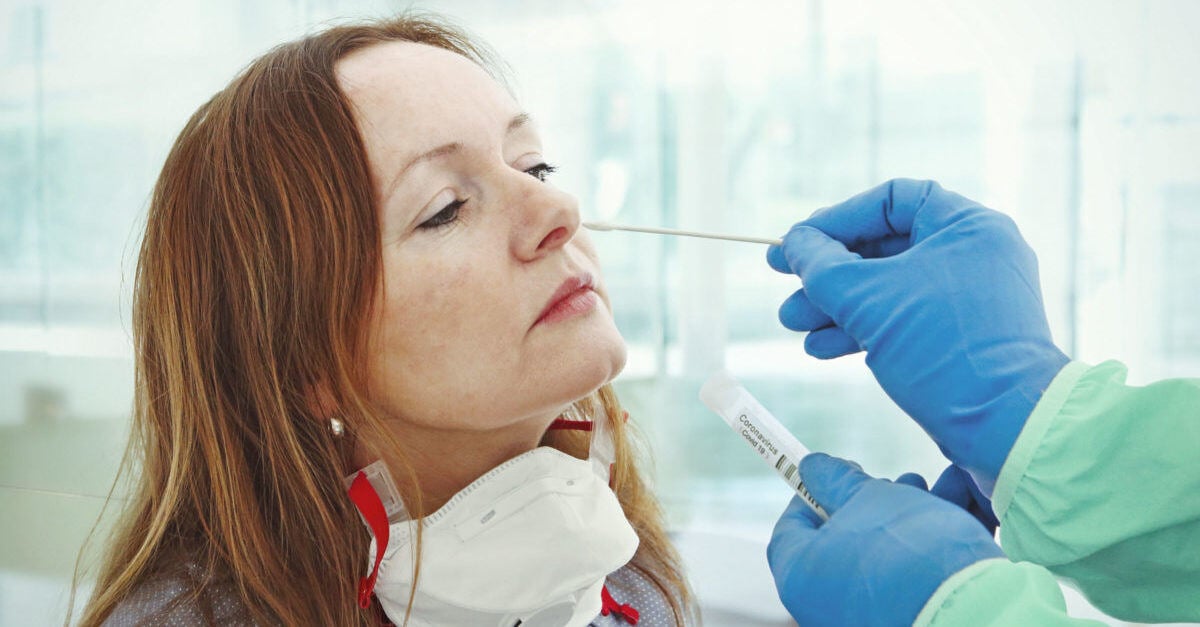We recognize that COVID-19 testing can be a challenging topic to navigate as developments and messaging come to light. Let’s take some time to review the various testing types, the science behind these tests, along with limitations and strategies for utilizing testing effectively.
Diagnostic Testing Explained
Diagnostic testing comes in three different types – antigen, molecular, and antibody testing – each with its own set of risks, benefits, and dependencies. So, how do these tests work?
Antigen Testing
Antigens are proteins that are found on the surface of cells and act as a marker for identification.
Molecular Testing
Also known as PCR, NAAT, LAMP, etc. This type of testing looks for strands of the virus with RNA. The type we’ve heard the most about in relation to COVID-19 is the PCR test.
Antibody Testing
This type of testing looks for the patient’s response to the virus. It is also known as Serology Testing, and shows recent or past exposure to the virus. However, immune deficiencies and medications might impact accuracy.
Now let’s dive a bit deeper…
Antigen testing involves obtaining a nasal swab and testing it for the presence a specific protein from the virus. The current version of this test is very specific (a positive test is positive), but is not very sensitive (a negative result could be a ‘false negative’); therefore, the effectiveness of this test to rule out COVID-19 is controversial at this time.
Polymerase Chain Reaction testing, otherwise known as PCR testing, is collected from a sample of material where the virus thrives in the nasopharyngeal mucosa. PCR tests can identify RNA or DNA strands that match a known template. This test is valuable when seeing an ill patient to determine whether or not a specific virus is present. There are constraints – not just a limited supply of testing swabs and reagents, but also of the Personal Protective Equipment (PPE) needed to obtain the sample. Because the test is only as good as the sample that is obtained, there are estimates of 10-30 percent false negative rates. Therefore, this test should not be used in isolation.
Potential solutions to these constraints are increasing the production of the swabs, changing the swab, or allowing the patient to obtain the swab/specimen on their own. Also, the possibility of widespread ‘spit testing,’ which is a PCR test performed from a vial of self-produced saliva, is promising to remove the dependency on swabs and PPE, but the test has not been adequately validated or made widely available yet.
Serology testing, also known as antibody testing (IgM, IgG), is helpful to get an estimate of the overall disease prevalence, but has several limitations, including lack of validating data due to the rush to market. Initial tests that came to market quickly tended to be unreliable with varying degrees of sensitivity and specificity; therefore, the FDA has not provided Emergency Use Authorization to most of these tests. Those that have EUA are usually processed in high-complexity labs and require a blood draw. Additionally, these tests have demonstrated the potential to pick up prior infections of other coronavirus strains, creating a potentially false sense of security and immunity. There has been talk about using the IgG to assume immunity, but there are too many unknowns to support that. You may ask, what level of IgG confers immunity or how long does that immunity last? No one knows at this point if having antibodies means a person is immune, or what level of antibodies are required for immunity. The duration of immunity is also unknown.
At this time, it is premature to conclude that testing has a definitive role in the return to work process; however, it is critical to have adequate testing in place to use on ill individuals to differentiate between COVID-19 and strep or influenza – this will enable and maintain a safe, reopened work environment.
We recognize that things have been moving fast and information is ever-changing. For information regarding strategies and tools when returning to the workplace, download our Return to Work Playbook.
